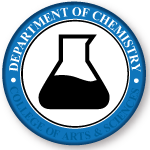Document Type
Article
Publication Date
5-10-2017
Publication Title
Scientific Reports
Volume
7
Issue
1665
First Page
1
Last Page
15
Abstract
Hedgehog (Hh) pathway is involved in epithelial-mesenchymal transition (EMT) and cancer stem cell (CSC) maintenance resulting in tumor progression. GDC-0449, an inhibitor of Hh pathway component smoothened (Smo) has shown promise in the treatment of various cancers including pancreatic cancer. However, the emergence of resistance during GDC-0449 treatment with numerous side effects limits its use. Therefore, here we report the design, synthesis and evaluation of novel GDC-0449 analogs using N-[3-(2-pyridinyl) phenyl] benzamide scaffold. Cell-based screening followed by molecular simulation revealed 2-chloro-N1-[4-chloro-3-(2-pyridinyl)phenyl]-N4,N4-bis(2-pyridinylmethyl)-1,4- benzenedicarboxamide (MDB5) as most potent analog, binding with an extra interactions in seventransmembrane (7-TM) domain of Smo due to an additional 2-pyridylmethyl group than GDC-0449. Moreover, MDB5 was more efficient in inhibiting Hh pathway components as measured by Gli-1 and Shh at transcriptional and translational levels. Additionally, a significant reduction of ALDH1, CD44 and Oct-3/4, key markers of pancreatic CSC was observed when MIA PaCa-2 cells were treated with MDB5 compared to GDC-0449. In a pancreatic tumor mouse model, MDB5 containing nanoparticles treated group showed significant inhibition of tumor growth without loss in body weight. These evidence highlight the enhanced Hh pathway inhibition and anticancer properties of MDB5 leaving a platform for mono and/or combination therapy.
Recommended Citation
Kumar, Vinod; Chaudhary, Amit Kumar; Dong, Yuxiang; Zhong, Haizhen; Mondal, Goutam; Lin, Feng; Kumar, Virender; and Mahato, Ram I., "Design, Synthesis and Biological Evaluation of novel Hedgehog Inhibitors for treating Pancreatic Cancer" (2017). Chemistry Faculty Publications. 52.
https://digitalcommons.unomaha.edu/chemfacpub/52
Creative Commons License

This work is licensed under a Creative Commons Attribution 4.0 License.


Comments
© The Author(s) 2017
DOI:10.1038/s41598-017-01942-7